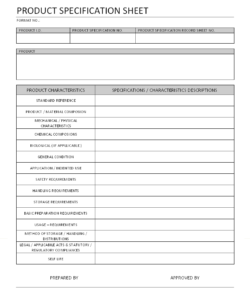Welcome back, Innovators!
This week, we will deep dive into the topic of starting on your Product Specification. Also called Product Specs, it is a document with a set of requirements that provides product teams the information they need to build out new features or functionality.
How To Begin: Find Out What Your Competition Is Doing
Identify a product idea. A lot of times a problem is just presented to you and this often comes from a customer feedback. It may not always be an ideal feedback but it can somehow help you identify the problem. In fact, these feedbacks that your customers are talking about are sometimes what the actual problems are. Problems can also be something that you can relate to or problems that you have incurred yourself. By identifying the problem, you identify a product idea then find a solution before bringing it to market.
List out features. Once you’ve identified your product idea, you can list out features that you think your product should have. If for example, you want a better phone, you can list down the size, the performance, screen or any other key features that you are specifically looking for. Then go out and start looking for similar products in the market.
Look for potential competitors. Once you’ve found similar products on market, take down what your competitors are listing as their key features. Start making a matrix of all these features. On one side of your matrix, list all the features that you have filtered out like size, speed, performance, etc. The other side will be the actual product or manufacturer and what their performance is. Below is an example of a product specification sheet you can use to identify product requirements (or download our product specifications template).

Find trends. You will begin to start seeing trends. These trends is what can be identified as differentiators. For instance, if everyone of your competitor is mentioning size then it is most likely what their customers hold of value. Start weighing these factors using these different methods:
— How many competitors are mentioning it (if only one competitor mentions a feature and you benchmark it against 6 or 7 in market, then it may not be as big of a deal to a customer.
— Evaluate what you think is feasible and can be advantageous to your customers. What is it that you need to meet at, be better at or what it is you think is important.
— Internalize. What is that you feel your product should do. It can be a meet to product but if you want to be a little more successful then you need to identify what is it that is going to differentiate yourself from the others. Determine if you want additional features.
This is basically how you create a list of product specification and start weighting it. It is when you need to put your technical knowledge and your own features in addition to your competitors.
A product specification is an important early step for your product development. Every detail of your product specs holds importance. Use it to help your product team create the product, provide a detailed overview of what all features should be embedded to your product to be able to get the desired result.
Thank you for taking the time to read. Watch out for our next topic on how we can identify if these specifications are what your customers really want. (The Voice of the Customers and Understanding the Voice of the Customer.)
A full video of this article is available at https://www.youtube.com/watch?v=1YaA0rejyz0&t=923s.
For more product development webinars, you may visit our page at https://bigrocksengineering.com/webinar/
Continue to invent. Continue to innovate. Continue to live The Innovator Lifestyle.
About Mike Hill
An experienced General Manager with a demonstrated history of working in the manufacturing and consumer services industry. Strong engineering and operations professional skilled in Budgeting, Manufacturing, Continuous Improvement, Product Development and Engineering.
Discuss Your Project?
mhill@bigrocksengineering.com
(314) 649-0610
Follow us everywhere!
Facebook | Instagram | LinkedIn | Twitter




